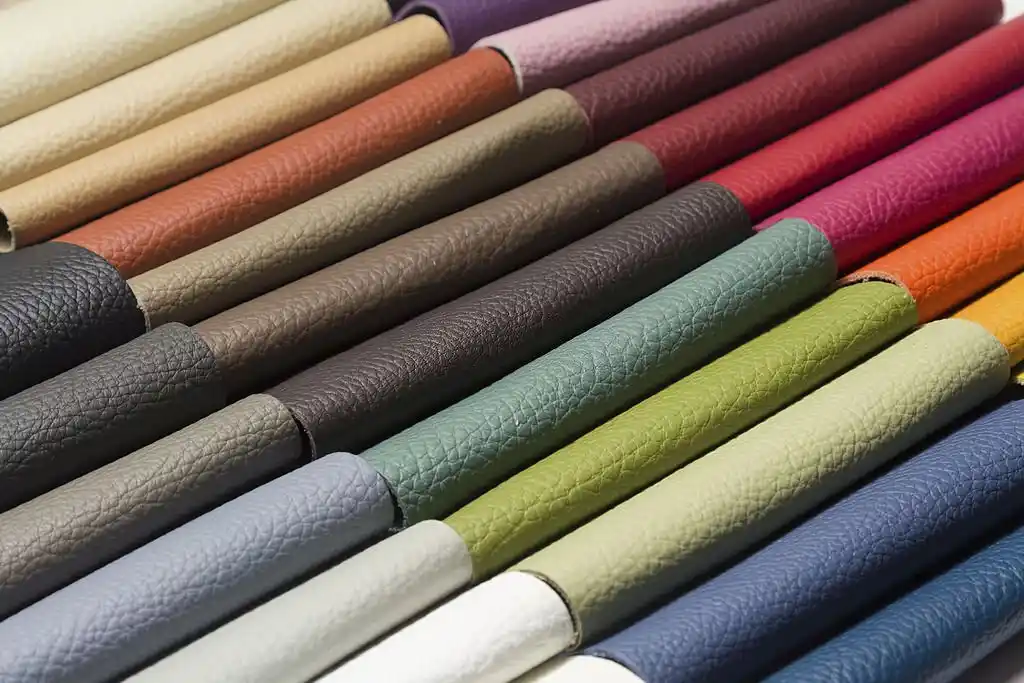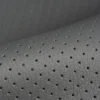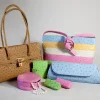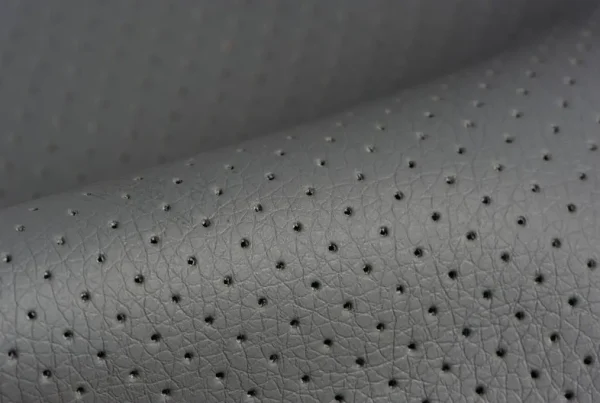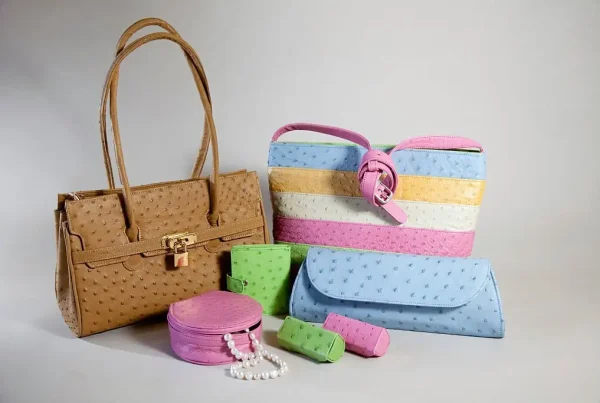What is Pigmented Leather
Pigmented leather is a type of leather that undergoes a coloring process where a layer of pigments and protective coating is applied to the surface. This coating gives the leather a uniform color and helps it resist stains and fading. Pigmented leather is known for its durability, making it ideal for everyday use and high-traffic areas. It is also popular in the leather industry due to its versatility and wide range of color options. With its practical benefits and aesthetic appeal, pigmented leather has become a preferred choice for various applications, from furniture upholstery to fashion accessories.

Understanding the Pigmentation Process
Pigmented leather is made through a specialized coloring process that involves applying a layer of pigments and a protective top coat to the leather surface. During the manufacturing process, the leather is thoroughly cleaned and treated to ensure optimal adhesion of the pigments. The pigments, which are small particles of color, are then carefully mixed with binders and applied to the leather. This layer of pigments not only imparts the desired color but also helps conceal natural blemishes and variations in the leather’s surface, resulting in a more uniform appearance.
Various types of pigments can be used in the pigmentation process, each offering distinct effects. Organic pigments are derived from natural sources and provide vibrant and rich colors. On the other hand, inorganic pigments are synthetic and offer a wider range of hues, including metallic and pearlescent shades. Additionally, pigments can be transparent, allowing the natural texture of the leather to show through, or opaque, providing a more solid and consistent color coverage. The choice of pigments influences the final appearance of the pigmented leather, making it a versatile choice for achieving different design aesthetics.
Advantages and Disadvantages:
Pigmented leather also referred as protected leather offers several benefits, making it a popular choice for various applications. One of its key advantages is its exceptional durability. The layer of pigments and protective coating creates a strong barrier that helps the leather resist wear, stains, and fading, making it ideal for high-traffic areas and everyday use. Additionally, protected leather comes in an extensive array of color options, allowing for greater design flexibility and the ability to match specific decor or style preferences. Its uniform appearance also helps conceal minor imperfections in the leather, ensuring a more consistent and polished look.
Despite its numerous advantages, protected leather does have some potential drawbacks. One of the main concerns is reduced breathability. The pigmentation process creates a sealed surface that limits the leather’s ability to breathe, leading to a less ventilated and potentially less comfortable material, especially in warmer climates. Moreover, the layer of pigments and coatings can obscure the natural grain and texture of the leather, resulting in a less authentic and less visually interesting appearance compared to full-grain or aniline leather. For those seeking the natural beauty and patina that develop over time, pigmented leather may not develop the same character and charm as other types of leather.

Uses and Applications of Protected Leather
Pigmented leather sometimes also named as corrected leather finds widespread use across various industries, owing to its durability and color options. In the furniture industry, protected leather is a popular choice for upholstery due to its resistance to stains and wear, making it ideal for sofas, chairs, and recliners in homes, offices, and public spaces. It is also extensively employed in automotive interiors, providing a luxurious and hard-wearing finish for car seats, steering wheels, and door panels. Additionally, protected leather is commonly used in fashion accessories, such as handbags, wallets, and belts, offering a wide spectrum of colors to match diverse style preferences. Furthermore, pigmented leather is utilized in the production of footwear, creating long-lasting and versatile shoes suitable for various activities and climates.
Design considerations and aesthetic versatility play a significant role in the widespread adoption of corrected leather. Designers and manufacturers appreciate the freedom to choose from an array of colors, from classic neutrals to vibrant hues, enabling them to create contemporary and stylish products that resonate with different consumer tastes. The uniform appearance of pigmented leather also allows for a cohesive and sophisticated design aesthetic, making it easier to achieve a consistent look in interior décor and fashion collections. Moreover, the ability to conceal minor imperfections in the leather surface enhances the appeal of pigmented leather for products where flawless appearance is essential.
Caring for Pigmented Leather
To ensure the longevity of corrected leather products, regular cleaning and proper maintenance are essential. For day-to-day care, use a soft, damp cloth to gently wipe away dust and dirt. Periodically, consider using a mild soap or leather cleaner specifically formulated for corrected leather to remove any stubborn stains. Avoid using harsh chemicals or abrasive materials that may damage the protective coating. Additionally, it is crucial to keep pigmented leather away from direct sunlight and heat sources to prevent fading and drying out.
Compared to other leather types, corrected leather has the advantage of being more resistant to stains and fading due to its protective coating. However, it also has reduced breathability, which means it may require less frequent conditioning compared to full-grain or aniline leather. When conditioning corrected leather, use a product designed for coated leathers to maintain its suppleness and prevent cracking. Despite its durability, it is still essential to handle pigmented leather with care to avoid scratches or cuts that may compromise the protective layer. By following these care tips, pigmented leather products can retain their beauty and quality for years to come.
Pigmented Leather vs. Aniline and Semi-Aniline Leather
When comparing pigmented leather with other leather finishes, such as aniline and semi-aniline leather, distinct differences arise. Pigmented leather undergoes a coloring process with a protective coating, resulting in a more uniform appearance and increased durability. On the other hand, aniline leather is minimally treated, showcasing the natural grain and texture but requiring more delicate care. Semi-aniline leather strikes a balance between the two, offering some protection while retaining a more natural look. Each finish offers unique qualities, and the choice between them depends on the desired appearance, feel, and level of maintenance one prefers. Whereas, sheepskin leather boasts unmatched softness and warmth
In terms of appearance, pigmented leather boasts a uniform and consistent color due to its coating, while aniline leather exhibits natural variations and imperfections. Semi-aniline leather offers a compromise with a slight protective coating yet maintaining a semblance of natural beauty. In terms of feel, aniline leather retains its soft and supple texture, while pigmented leather may feel slightly less natural due to the coating. Maintenance-wise, pigmented leather requires less frequent conditioning compared to aniline leather, which benefits from regular nourishment. Semi-aniline leather falls in between, needing moderate care. The decision between these finishes depends on personal preferences for aesthetics, texture, and the desired level of maintenance.
The Cost Factor: Is Pigmented Leather Worth the Investment?
When considering the cost-effectiveness of pigmented leather, it is important to weigh its benefits against the price. Pigmented leather’s durability and resistance to stains may justify a higher initial cost compared to more delicate leather finishes. The protective coating can also contribute to reduced maintenance expenses over time, making it a long-term investment.
Factors to consider when evaluating the value for money include the intended use of the leather product, desired aesthetics, and budget constraints. Protected leather’s practicality and wide range of color options may align with specific needs, making it a wise investment for high-traffic areas and everyday use. Understanding personal priorities and design preferences will aid in making an informed decision. Whether corrected leather is the right choice and worth the investment.
Common Misconceptions about Pigmented Leather
There are several misconceptions and myths surrounding pigmented leather that need clarification. One prevalent misconception is that protected leather is of lower quality due to its coloring process. However, pigmented leather can be of high quality and is valued for its durability. Another myth is that it lacks breathability, but proper care and regular maintenance can ensure it remains comfortable.
Clarifying the properties of corrected leather helps dispel doubts. Its protective coating enhances its resistance to stains and fading, making it ideal for family-friendly environments. While it may not have the same natural appearance as aniline leather, pigmented leather’s uniform look can suit a range of design preferences. Understanding the realities of corrected leather helps make an informed decision based on individual needs and preferences.
Eco-Friendly Aspects of Pigmented Leather
When assessing the environmental impact of pigmented leather production, it’s crucial to consider the entire process. Protected leather typically involves more chemical treatments during the coloring and coating stages, which can raise concerns about pollution and resource usage. However, advancements in sustainable manufacturing practices and the use of eco-friendly pigments aim to minimize the environmental footprint.
Ethical considerations play a vital role in promoting sustainability. Opting for responsibly sourced leather and supporting brands committed to sustainable practices can align with ethical values. Consumers can also extend the lifespan of protected leather products through proper care. They can also take steps for reducing waste and contributing to an eco-friendlier approach to fashion and interior design.
Conclusion
Pigmented leather boasts a protective coating, ensuring durability and resistance to stains, making it a preferred choice for furniture, automotive upholstery, and fashion accessories. Its wide range of colors allows for versatile design options. Overall, pigmented leather is a valuable investment for those seeking practicality and design flexibility. Its benefits, coupled with proper care, make it suitable for various purposes, making it a wise choice for both fashion and interior décor.
